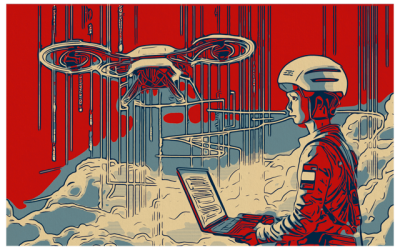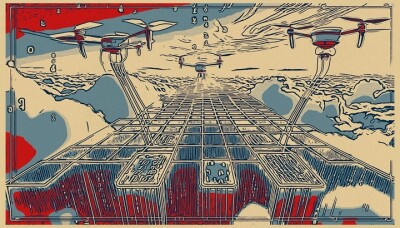In the previous article of our series on drones and data, we looked at how other industries use their key metric, e.g., the hotel industry and “RevPAR,” which means “revenue per available room.” RevPAR is the total revenue a hotel produces divided by the number of total rooms a hotel has to sell. This provides two things. First, it helps a hotel understand whether its media and rate programs are working and, second, it gives a meaningful comparison to other hotels to determine whether a particular hotel is performing well or not.
In this article, we’re going to dive into how to identify the other data sources that support the key metric for drone operations, CPM, which in turn gets us closer to eventually leveraging data tools.
Let’s first start by looking at how the hotel industry uses competitive intelligence data sources to support and understand RevPAR: Rate Data, Demand Data, and Media ROI Data.
- Rate Data. This is the rates charged by a hotel’s competitors within a particular market. For example, Hotel A will look to see how much its competitors (Hotels B, C, and D) are charging on May 10 for a double queen room.
- Demand Data. However, it’s not enough for a hotel to just know the rates charged by its competitors. It also needs to know its future occupancy (i.e., “demand”) compared to its competitors. If Hotel A is nearly full for May 10 but Hotels B, C, and D are only 50% full, then Hotel A knows two things: 1. its media strategy was more effective than its competitors and 2. it can comfortably raise its rates.
- Media ROI. The “Return on Investment” is: how much did Hotel A spend on its media compared to the number of rooms that were booked (and attributable) to that media spend.
The net/net here is: pricing, occupancy, and media mix are the primary drivers behind RevPAR. If a hotel masters the Rate, Demand, and Media ROI data sets, then it will beat its competitors and drive higher RevPAR.
OK, so how do we apply the lessons from the hotel industry to drone operations (and CPM)? Well, because the drone industry is still in its infancy, the data landscape just isn’t as robust as the hotel industry. Competitive intelligence data (e.g., Rate Data, Demand Data, and Media ROI) are all readily available commercial products that any hotel can buy, but nothing like that exists yet in the drone space. Someday it will though.
What can we as drone operators do now? Well, a lot actually. Two areas for you to focus now:
- Ops Platforms. While we don’t have competitive intelligence data products yet in the drone space, dozens of operations management platforms collect all the data we need to support the key metric, CPM. Air Data, Brincs Unified Drone Operations Platform, AirHub, DJI Flight Hub are just a few examples. These platforms allow you to track the total flight time, minutes of battery usage, miles flown per battery, and even in some cases the “service” flight time - which is the most valuable piece of data because it shows how long you were actually able to inspect the building, videograph the real estate listing, etc.
- Kaizen. Since we don’t know how our competitors are performing, we need to compete against ourselves. We agree that it sounds a bit odd but this is the playbook that Toyota uses to be the master of quality and durability. It’s what Toyota calls “kaizen,” which roughly translates to “continuous improvement.” Toyota doesn’t use competitive intelligence. Instead, under Kaizen Toyota sets objectives for its teams to hit new performance targets (e.g., a target to decrease in # of reported quality problems) and then Toyota measures success on hitting that new objective by comparing to the old objective (instead of using a competitor’s performance like in the hotel space).
Putting it all together.
- Calculate CPM. You collected your fully loaded costs in the first article of this series. Now we are going to combine that with, ideally, the Service Flight Time, in order to calculate your true CPM for your drone operations by dividing the fully loaded costs by the Service Flight Time.
- Calculate the Next Best CPM. What if you don’t have the Service Flight Time? That’s ok. You can use the minutes of battery or the total flight times but just know that, because you are including the time spent flying to and from the actual job site and other superfluous tasks, you are understating your true CPM, potentially by a large margin.
- Kaizen-ing. Now that you know your true CPM you need to “Kaizen” it by doing a time-series of CPMs across your customer accounts and projects so that you can “compete against yourself” like Toyota does by comparing new CPMs with older CPMs. CPM makes comparing the costs of different projects super easy.
In the next article, we’ll discuss how to ensure that you actually own the data from these operations platforms, including actual contractual provisions to include in your next negotiations.
About the Authors:
Justin Call is the Co-Founder and CEO of Modovolo, a start-up that's built a drone to carry any payload for hours instead of minutes at a cost far below anything on the market. You'll want to see it for yourself. He has been an executive at venture capital and private-equity-backed technology and data companies with three exits ranging from $1.5 billion to $130 million. He has deep experience in leveraging data to understand and build businesses.
Eno Umoh is an expert in marketing and business operations and is the co-founder of Global Air Media & The Global Air Drone Academy where he has taught in 26 countries over 18,000 students about drone technology, best practices, and how to make a drone business scale and get to profit. Eno collaborates with drone businesses to help them achieve their goals.
















Comments